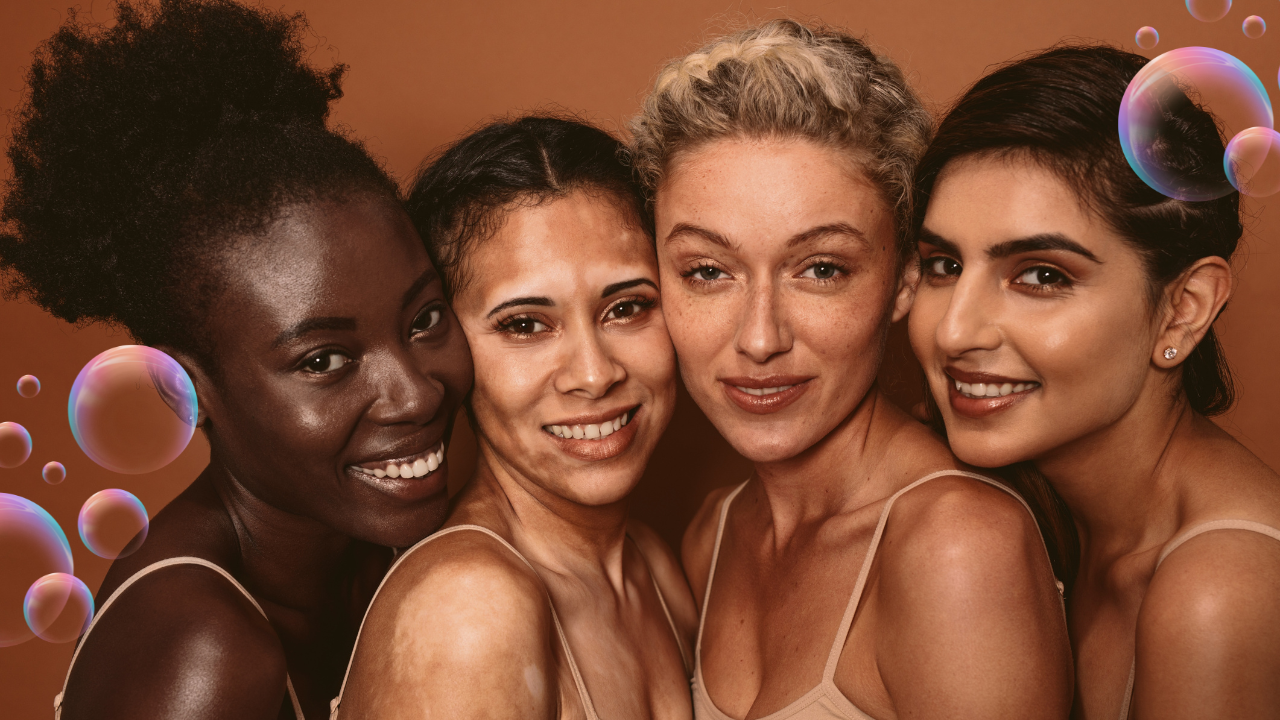
Discover Your Skin Type The Right Way
Skin Type Quiz
For the most accurate result, wash your face with a gentle cleanser, pat dry, and wait 30 minutes before you start.
Before we begin…
First things first. What even is a skin type? It’s not just some random label; it’s the blueprint that helps you choose the right skincare products. The most common way to classify skin types is by oil production, a.k.a. how much oil your skin naturally makes.
Understanding this is key because your skin type affects everything. From what kind of cleanser you need to whether a moisturizer will make you glow or break you out. It is especially helpful in choosing the best actives (ingredients) to help your skin issues.
Your skin either:
- Pumps out too much oil (Oily)
- Doesn’t make enough oil (Dry)
- Can’t decide and does both (Combination)
- Chills in the middle (Normal)
Now, let’s figure out yours.
Our skin type quiz covers all the questions you’ll need to answer to find your skin type. One of the most important tests you’ll be asked to take is the “Face Wash Test.”
The Face Wash Test

Here’s how to do it:
Wash your face with a gentle cleanser. No exfoliants, no active ingredients, just something basic.
Pat dry. No toner, no moisturizer, no serum. Nada.
Set a timer for 30 – 60 minutes and do nothing.
Observe your skin’s reaction:
- Feels tight and dry? → You have dry skin. This means your skin doesn’t produce enough natural oils.
- Looks shiny all over? → You have oily skin. This means your skin produces too much natural oils.
- Shiny in some areas (like the T-zone) but normal/dry in others? → You have combination skin.
- Feels comfortable; not too oily, not too dry? → You have normal skin.
Bonus Tip: If your skin feels tight and oily, you might be dehydrated, not dry. (Yes, there’s a difference, and yes, that’s why your skincare might not be working.)
That’s it. No trick questions, no overcomplicated quizzes. Just your skin telling you what’s up.
But Wait… What About Sensitive & Dehydrated Skin?

You might’ve noticed that sensitive and dehydrated skin didn’t make the list of skin types. That’s not a mistake. We break this down fully in Unpacking the Most Common Skincare Lie, but here’s the quick version:
When classifying skin by oil production, sensitive and dehydrated skin don’t fit in because they have nothing to do with oil. You can be dry, oily, combination, or normal and still have sensitive or dehydrated skin.
- Sensitive skin = Easily irritated, reacts to products, weather, or even air.
- Dehydrated skin = Lacking water (not oil), making it feel tight, rough, or dull, even if it’s oily.
So, while these conditions matter for your skincare routine, they don’t define your skin type.
Now, that you know your true skin type, are you actually using the right products? Here’s how to find out.
Skincare Guide for your Skin Type
Got dry skin? Here’s a simple step-by-step ADHD skincare routine for dry skin.
Got oily skin? Here’s an ADHD-Friendly, Budget 4-Step Skincare Routine for Oily Skin.
More skin types to come!
Frequently Asked Questions about Skin Types

How can I check my skin type?
The most accurate way is the Face Wash Test. Wash your face with a gentle cleanser, don’t apply anything after, and observe your skin after 30 to 60 minutes. This tells you if you’re oily, dry, combination, or normal. It is essential for building an effective ADHD skincare routine.
What are the 4 types of skin?
The four main skin types are:
- Oily: Produces excess oil.
- Dry: Lacks natural oil.
- Combination: Oily in some areas, dry in others.
- Normal: Balanced oil production.
Note: Sensitive and dehydrated skin are conditions, not types.
How to get 100% clear skin?
Clear skin starts with knowing your true skin type. Once you have that, use simple, consistent products (cleanser, moisturizer, and SPF), then build up with serums based with actives like niacinamide or acids based on your skin’s type and needs. For ADHD skincare, keeping your routine minimal and repeatable is key.
How do you know what skin type number you are?
The “skin type number” usually refers to the Fitzpatrick skin type scale, a classification system that measures how your skin reacts to sun exposure, especially burning and tanning. It’s mostly used in dermatology, sunscreen recommendations, and laser treatments, not daily skincare routines.
| Type | Skin Tone | Burns | Tans | Example |
| I | Very fair, pale, freckled | Always burns | Never tans | Irish, Scottish |
| II | Fair skin | Usually burns | Tans minimally | Northern European |
| III | Light to medium skin | Sometimes burns | Tans gradually | Mediterranean, Latino |
| IV | Olive or light brown skin | Rarely burns | Tans easily | Middle Eastern, Asian |
| V | Brown skin | Very rarely burns | Tans very easily | African, Indian, Southeast Asian |
| VI | Deep brown or dark skin | Almost never burns | Tans deeply and easily | Sub-Saharan African, Afro-Caribbean |
However, it’s worth noting that dermatologists do a better job at figuring out your Fitzpatrick type than you do. A 2013 study published in JAMA Dermatology showed that dermatologist-assigned Fitzpatrick skin types were significantly more accurate than self-reports, especially for skin types III to VI.
The study also found that nearly 42% of participants couldn’t even be classified using the standard self-assessment questions, which proves how flawed those questions can be, particularly for people with skin of color.
Which skin tone is most attractive?
Beauty is subjective. Every skin tone is beautiful, and skincare should focus on health, not changing tone. What matters most is glow, texture, and confidence, not shade.
Which skin type is best, oily or dry?
Neither is “better.” Each has strengths and challenges. Oily skin ages slower, but breaks out more. Dry skin is often clearer but prone to flakiness. The “best” skin type is the one you understand and care for properly.
